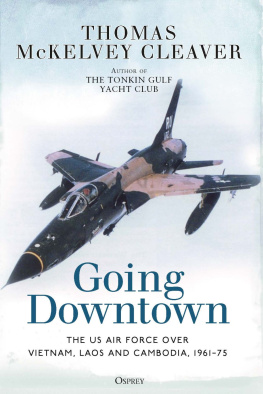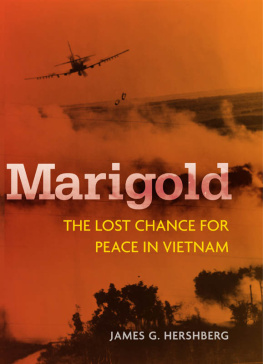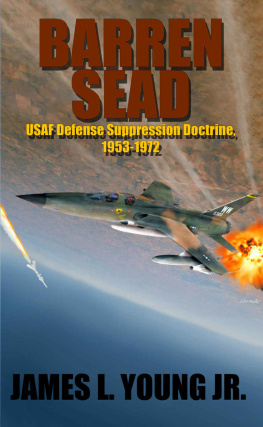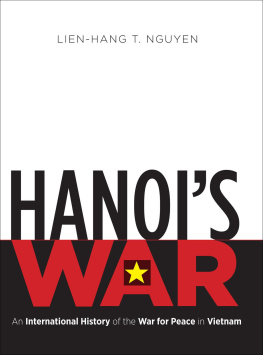Thompson Dr Wayne - To Hanoi And Back: The United States Air Force And North Vietnam 1966-1973 [Illustrated Edition]
Here you can read online Thompson Dr Wayne - To Hanoi And Back: The United States Air Force And North Vietnam 1966-1973 [Illustrated Edition] full text of the book (entire story) in english for free. Download pdf and epub, get meaning, cover and reviews about this ebook. year: 2014, publisher: Normanby Press, genre: Non-fiction. Description of the work, (preface) as well as reviews are available. Best literature library LitArk.com created for fans of good reading and offers a wide selection of genres:
Romance novel
Science fiction
Adventure
Detective
Science
History
Home and family
Prose
Art
Politics
Computer
Non-fiction
Religion
Business
Children
Humor
Choose a favorite category and find really read worthwhile books. Enjoy immersion in the world of imagination, feel the emotions of the characters or learn something new for yourself, make an fascinating discovery.
- Book:To Hanoi And Back: The United States Air Force And North Vietnam 1966-1973 [Illustrated Edition]
- Author:
- Publisher:Normanby Press
- Genre:
- Year:2014
- Rating:5 / 5
- Favourites:Add to favourites
- Your mark:
- 100
- 1
- 2
- 3
- 4
- 5
To Hanoi And Back: The United States Air Force And North Vietnam 1966-1973 [Illustrated Edition]: summary, description and annotation
We offer to read an annotation, description, summary or preface (depends on what the author of the book "To Hanoi And Back: The United States Air Force And North Vietnam 1966-1973 [Illustrated Edition]" wrote himself). If you haven't found the necessary information about the book — write in the comments, we will try to find it.
Thompson Dr Wayne: author's other books
Who wrote To Hanoi And Back: The United States Air Force And North Vietnam 1966-1973 [Illustrated Edition]? Find out the surname, the name of the author of the book and a list of all author's works by series.
To Hanoi And Back: The United States Air Force And North Vietnam 1966-1973 [Illustrated Edition] — read online for free the complete book (whole text) full work
Below is the text of the book, divided by pages. System saving the place of the last page read, allows you to conveniently read the book "To Hanoi And Back: The United States Air Force And North Vietnam 1966-1973 [Illustrated Edition]" online for free, without having to search again every time where you left off. Put a bookmark, and you can go to the page where you finished reading at any time.
Font size:
Interval:
Bookmark:


This edition is published by PICKLE PARTNERS PUBLISHINGwww.picklepartnerspublishing.com
To join our mailing list for new titles or for issues with our books picklepublishing@gmail.com
Or on Facebook
Text originally published in 2000 under the same title.
Pickle Partners Publishing 2014, all rights reserved. No part of this publication may be reproduced, stored in a retrieval system or transmitted by any means, electrical, mechanical or otherwise without the written permission of the copyright holder.
Publishers Note
Although in most cases we have retained the Authors original spelling and grammar to authentically reproduce the work of the Author and the original intent of such material, some additional notes and clarifications have been added for the modern readers benefit.
We have also made every effort to include all maps and illustrations of the original edition the limitations of formatting do not allow of including larger maps, we will upload as many of these maps as possible.
To Hanoi and Back -The United States Air Force and North Vietnam 19661973
Wayne Thompson
Contents
No experience etched itself more deeply into Air Force thinking than the air campaigns over North Vietnam. Two decades later in the deserts of Southwest Asia, American airmen were able to avoid the gradualism that cost so many lives and planes in the jungles of Southeast Asia. Readers should come away from this book with a sympathetic understanding of the men who bombed North Vietnam. Those airmen handled tough problems in ways that ultimately reshaped the Air Force into the effective instrument on display in the Gulf War.
This book is a sequel to Jacob Van Staaverens Gradual Failure: The Air War over North Vietnam, 19651966 , which we have also declassified and are publishing. Wayne Thompson tells how the Air Force used that failure to build a more capable servicea service which got a better opportunity to demonstrate the potential of air power in 1972.
Dr. Thompson began to learn about his subject when he was an Army draftee assigned to an Air Force intelligence station in Taiwan during the Vietnam War. He took time out from writing To Hanoi and Back to serve in the Checkmate group that helped plan the Operation Desert Storm air campaign against Iraq. Later he visited Air Force pilots and commanders in Italy immediately after the Operation Deliberate Force air strikes in Bosnia. During Operation Allied Force over Serbia and its Kosovo province, he returned to Checkmate. Consequently, he is keenly aware of how much the Air Force has changed in some respectshow little in others. Although he pays ample attention to context, his book is about the Air Force. He has written a well-informed account that is both lively and thoughtful.
The bibliography at the end of the volume lists several other Air Force books about the Vietnam War. Our history program is engaged in a constant effort to reevaluate the services past in light of new research and new perspectives. We welcome criticism of our published work and suggestions for future publications.
RICHARD P. HALLION
Air Force Historian
Wayne Thompson is Chief of Analysis at the Air Force History Support Office in Washington. During the Vietnam War, he served as an Army draftee at an Air Force intelligence station on Taiwan. He did his undergraduate work at Union College in Schenectady, New York, and the University of St. Andrews, Scotland. He earned his doctorate in history at the University of California, San Diego, under Armin Rappaport. In August 1990, Dr. Thompson joined the Checkmate air campaign planning group in the Pentagon. Subsequently he was Senior Historical Advisor for the Gulf War Air Power Survey. In 1995 the Air Force sent him to study bombing operations launched from Italy against Bosnian targets, and in 1999 the crisis in Kosovo turned his attention to air operations over Serbia.
When I began to study these events, I thought I would write about one of the saddest portions of the Air Forces history. I may well have done so, but gradually (about as gradually as the Rolling Thunder air campaign of 196568 went about its business in North Vietnam) I came to take a more positive view of the Air Forces experience in Southeast Asia. Certainly the pain and death we normally associate with warfare caused many to suffer. Certainly the constraints under which the Air Force had to operate were extraordinarily restrictive and self-defeating. Certainly a reputation for ineffectiveness attached itself to bombing in North Vietnam and made air power seem a much less promising instrument than it was. But after years of seeking a more effective use of limited air power, the Linebacker campaigns over North Vietnam in 1972 joined with aerial mining of the ports there and simultaneous air operations in South Vietnam to make a dramatic differencealbeit a tardy and temporary one.
This rebound of American air power began well before the North Vietnamese invasion of South Vietnam in 1972 and continued long after the end of the war in 1975. The struggle for Southeast Asia helped to transform the Air Force from an almost total focus on potential nuclear warfare against the Soviet Union into a more varied and flexible force wielding increasingly sophisticated conventional weapons. But thinking about air power and about Southeast Asia lagged behind advances in technology. When the ultimate defeat finally came to South Vietnam and its American ally, persuasive victories for the new precision of American air power still lay far in the future.
Although the air campaigns against North Vietnam delivered a smaller tonnage of bombs than parallel efforts in South Vietnam and Laos, the Air Forces intellectual and emotional investment in North Vietnam was greater. There a heavier concentration of air defenses combined with the distance of targets from bases in Thailand and South Vietnam to make air operations more dangerous and more difficult. From its beginnings, the Air Force had defined itself as the service best able to attack targets far from the ground battle or the sea battle. Where troops fought as in South Vietnam, the Air Force provided only a portion of the firepower and a portion of the airlift. But a combination of heavy bombers and air refueling tankers permitted the Air Force to strike hard at great rangea capability not exploited in North Vietnam until the war was nearly over. While the bombers advantage in long-range striking power had come to be shared not only with Air Force intercontinental nuclear missiles but also with the Navys submarine-launched nuclear missiles, for long-range conventional attacks Air Force bombers remained the strongest option. When bombers were subtracted from the equation, however, the Air Force contribution lost its uniqueness. Little of North Vietnam was far from the Gulf of Tonkin, where Navy fighters could launch from carriers and reach much of the country without air refueling.
Navy and Marine aircraft joined fully in the bombing of North Vietnam, all the more so because American fears of Chinese intervention restricted the Air Forces heavy B52 bombers to a very limited role in North Vietnam for much of the war. Partly because the Air Force had concentrated on nuclear warfare preparations, it even found itself using some fighter planes and munitions developed by the Navy.
The B52s with their radar and large bombload could have dealt a far more severe blow to many North Vietnamese targets from the outset of the war not only in daylight and clear weather but also at night or in the bad weather prevalent over North Vietnam much of the year. The political prohibition against making full use of the B52s area bombing capability was an ingredient in the stimulation the war gave to the Air Forces search for a precision, all-weather, around-the-clock bombing capability for fighter aircraft. By the end of the war, laser-guided bombs had made true precision a reality, but darkness and foul weather continued to limit the effectiveness of air power.
Next pageFont size:
Interval:
Bookmark:
Similar books «To Hanoi And Back: The United States Air Force And North Vietnam 1966-1973 [Illustrated Edition]»
Look at similar books to To Hanoi And Back: The United States Air Force And North Vietnam 1966-1973 [Illustrated Edition]. We have selected literature similar in name and meaning in the hope of providing readers with more options to find new, interesting, not yet read works.
Discussion, reviews of the book To Hanoi And Back: The United States Air Force And North Vietnam 1966-1973 [Illustrated Edition] and just readers' own opinions. Leave your comments, write what you think about the work, its meaning or the main characters. Specify what exactly you liked and what you didn't like, and why you think so.

![Thompson Dr Wayne To Hanoi And Back: The United States Air Force And North Vietnam 1966-1973 [Illustrated Edition]](/uploads/posts/book/150424/thumbs/thompson-dr-wayne-to-hanoi-and-back-the-united.jpg)








